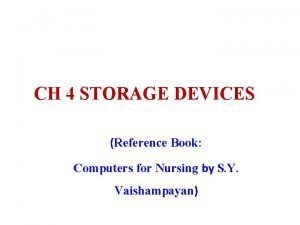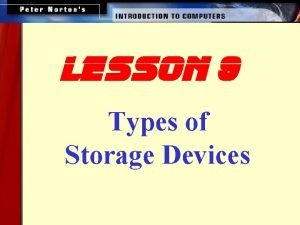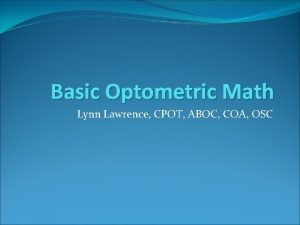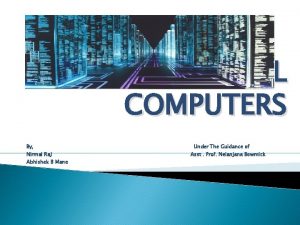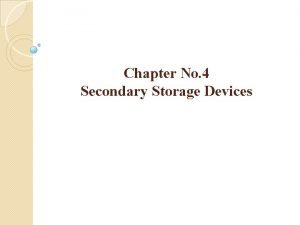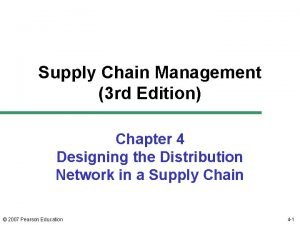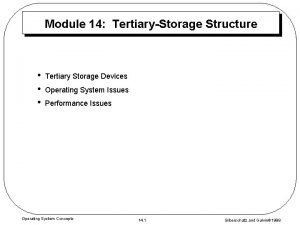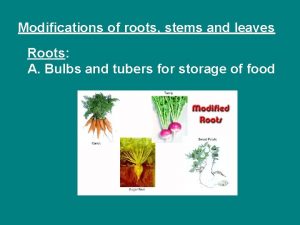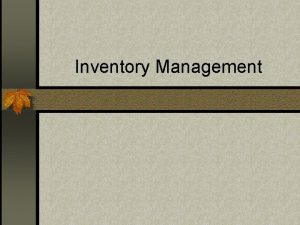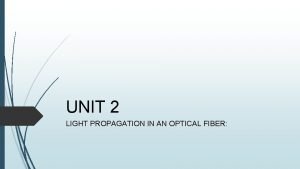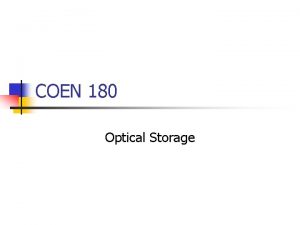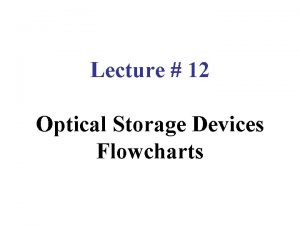Optical Storage Optical Storage o Examples of Optical
















- Slides: 16

Optical Storage

Optical Storage o - Examples of Optical Storage include: CD-ROM CD-RW DVD-ROM DVD-RW

Magnetic Storage o - Examples: Floppy Disk Drives Hard Drives Zip Drive Magnetic Tape

Magnetic storage o Data is stored by magnetising the surface of a flat, circular plate. o These plates constantly rotate at a high speed. o A read/write head floats on a cushion of air just above the plates surface. o The drive is inside a sealed unit because a speck of dust could cause heads to crash.

Capacity o o o This is how much data a type of storage media can hold. Examples are shown below: Floppy Disk capacity – 1. 44 Mb CD ROM Capacity – 700 Mb or 80 Mins DVD ROM Capacity – 4. 7 Gb or 2 ½ Hours

Access o 2 TYPES OF ACCESS: - DIRECT/RANDOM - SERIAL

Direct Access o o o The systems can go straight to the data it requires. A disk is a Random/Direct Access medium Makes this faster method of data storage than serial storage

Serial Access o One example is a Magnetic Tape Drive. o Slow o o Must ‘travel’ through various storage locations to get to required data. Think of an audio tape (if you remember these!)

Interface o A Hardware Device o Required to allow the processor to communicate with an external or internal device. o Sometimes the Interface is a board in the computer. o Other times the Interface is a connection to a port.

Why an Interface? o o - Different characteristics between the peripheral device and the processor. These characteristics include: Data Conversion Speed of Operation Temporary Storage of Data

Types of interface o Most common type = ANALOGUE to DIGITAL signal o o Peripheral accepts an Analogue Signal but must be converted in order for the processor to use the data. Examples – Sound & Pictures

Interfaces o o o The processor works at a speed in time with its internal clock. The processor works at a much faster rate than the peripherals. It is this difference in speed that requires the Interface to allow the device and the processor to work together.

Data Storage o o Data needs to be held temporarily in transit between the processor and a device. This allows the processor to continue with other tasks instead of standing idle. o This data is held in a ‘buffer’. o Printers have a buffer to hold data about to be printed. o Keyboard characters are stored in a buffer while they are being processed.

Inteface options o o o 4 Interface options to consider when buying a device. PC Card, Parallel Port, USB 2. 0, IEEE 1394 Firewire, Serial Port, IDE, SCSI Most users favour USB 2. 0 and Firewire because of their connection speeds and flexibility.

Speed of operation o - In terms of: Pages Per Minute (PPM) Frames Per Second (FPS) Megabytes Per Second (MBps) Megabits Per Second (Mbps)

exercise o Exercise 5 – p. 96 -97 LTS Computing Notes
 Examples of optical storage devices
Examples of optical storage devices What are optical storage devices are most commonly known as
What are optical storage devices are most commonly known as Primary storage and secondary storage
Primary storage and secondary storage Secondary storage vs primary storage
Secondary storage vs primary storage Secondary storage provides temporary or volatile storage
Secondary storage provides temporary or volatile storage Unified storage vs traditional storage
Unified storage vs traditional storage Transpose optical prescription
Transpose optical prescription Optical computing examples
Optical computing examples Is plotter a storage device
Is plotter a storage device Emc san storage
Emc san storage Producer storage with direct shipping example
Producer storage with direct shipping example Tertiary storage structure
Tertiary storage structure Root stem and leaf are all modified in
Root stem and leaf are all modified in Introduction to inventory management
Introduction to inventory management Optical illusions science fair projects
Optical illusions science fair projects When light travels from an optically denser medium
When light travels from an optically denser medium Optical fiber light propagation
Optical fiber light propagation
